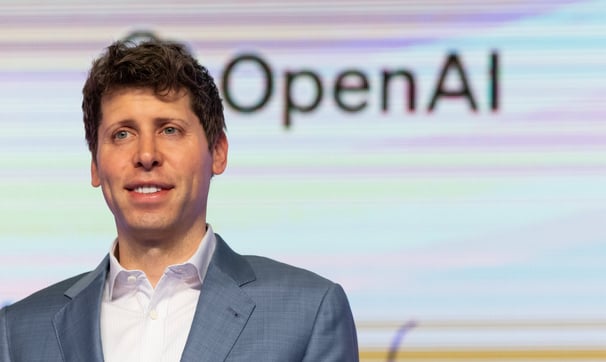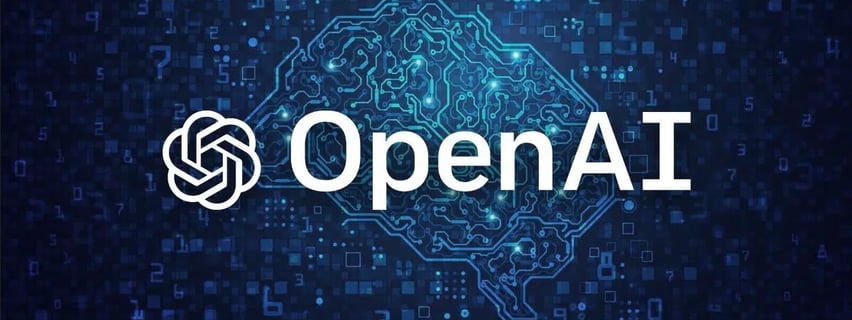OpenAI Convention 2024: The Future of AI
AICHATGPTOPENAI
In an electrifying convention held recently, OpenAI showcased its latest developments and enhancements in AI technology, offering a glimpse into the future of artificial intelligence and its expanding capabilities. The event was a testament to OpenAI's commitment to pushing the boundaries of AI, with groundbreaking announcements that promise to revolutionize various sectors.
1. GPT-5: The Next Leap in Language Models
The highlight of the convention was the unveiling of GPT-5, the next iteration of OpenAI's renowned language model series. Building on the success of GPT-4, this new model boasts significant improvements in understanding and generating human-like text. GPT-5 is designed to be more accurate, context-aware, and capable of handling even more complex tasks, making it an invaluable tool for businesses, educators, and developers.
Key Features:
Enhanced Contextual Understanding: GPT-5 can maintain context over extended conversations and generate more coherent and contextually relevant responses.
Multimodal Capabilities: For the first time, GPT-5 integrates multimodal input, allowing it to process and generate responses based on text, images, and even audio inputs.
Increased Efficiency: The new model is optimized for faster processing, reducing latency, and improving user experience.
2. ChatGPT: New Features and Enhancements
OpenAI also announced several exciting new features for ChatGPT to improve user interaction and expand its functionality. These enhancements make ChatGPT more versatile, user-friendly, and effective across various applications.
Latest Features:
Voice Interaction: ChatGPT now supports voice input and output, enabling more natural and conversational interactions. This feature is handy for accessibility and hands-free applications.
Listening Capabilities: With advanced listening capabilities, ChatGPT can understand spoken language with high accuracy, making it an effective tool for real-time communication and transcription.
Image Processing: ChatGPT can now process and analyze images, allowing it to provide detailed descriptions, identify objects, and even interpret visual data. This capability enhances its utility in education, healthcare, and e-commerce fields.
Custom Instructions: Users can now provide custom instructions to tailor ChatGPT’s responses to better fit specific needs and contexts, enhancing its adaptability for different tasks.
Integration with Third-Party Apps: Enhanced API capabilities allow seamless integration with various third-party applications, from productivity tools to customer service platforms, making ChatGPT more useful in multiple professional environments.
Real-Time Translation: ChatGPT now offers real-time translation across multiple languages, breaking down language barriers and facilitating global communication.
Improved Memory: ChatGPT's memory capabilities have been expanded, allowing it to retain information across sessions more effectively. This makes it easier for users to have ongoing, coherent conversations without reintroducing context.
3. AI in Healthcare: Pioneering New Frontiers
OpenAI announced significant advancements in AI applications for healthcare, aiming to revolutionize diagnostics, treatment planning, and patient care. Key partnerships with leading healthcare institutions have led to the development of AI models that can predict disease outbreaks, personalize treatment plans, and assist in complex surgical procedures.
Highlights:
Predictive Analytics for Disease Outbreaks: OpenAI's models can use vast datasets to predict potential disease outbreaks, enabling proactive measures and resource allocation.
Personalized Medicine: AI-driven analytics can now tailor treatment plans based on individual genetic profiles, lifestyles, and medical histories, enhancing treatment efficacy and patient outcomes.
Surgical Assistance: AI-powered tools can now assist surgeons by providing real-time data analysis and decision support during complex procedures, improving precision and safety.
4. Enhanced AI Ethics and Safety Measures
OpenAI introduced new protocols and frameworks to ensure responsible AI development and deployment by recognizing the growing concerns around AI ethics and safety. These measures focus on transparency, accountability, and mitigating biases in AI systems.
Key Initiatives:
Ethical AI Framework: A comprehensive framework outlining best practices for ethical AI development, emphasizing fairness, transparency, and accountability.
Bias Mitigation: Advanced techniques to detect and reduce biases in AI models, ensuring more equitable outcomes across diverse user groups.
User Privacy: Enhanced privacy protocols to protect user data and ensure compliance with global data protection regulations.
5. OpenAI Codex: Transforming Software Development
The convention also highlighted the advancements in OpenAI Codex, the AI system that powers GitHub Copilot. Codex has been enhanced to support more programming languages and offer deeper integration with development environments.
Improvements:
Expanded Language Support: Codex now supports a broader range of programming languages, including Rust, Go, and Swift, making it a versatile tool for developers.
Seamless Integration: Enhanced plugins for popular IDEs such as Visual Studio Code and JetBrains, streamlining the coding process and boosting productivity.
Automated Code Review: New features that assist in code review, suggesting improvements, and identifying potential bugs or vulnerabilities.
6. AI in Education: Enhancing Learning Experiences
OpenAI's commitment to education was evident with the introduction of AI tools designed to enhance learning experiences. These tools leverage AI to provide personalized tutoring, automated grading, and advanced content generation for educational purposes.
Educational Tools:
Personalized Tutoring: AI tutors that adapt to individual learning styles and pace, providing customized lessons and feedback.
Automated Grading: Tools that assist educators by automating the grading process, allowing for quicker and more consistent assessment of student work.
Content Generation: AI-driven content creation tools help educators develop engaging and interactive educational materials.
Conclusion: A Vision for the Future
OpenAI's recent convention underscored its dedication to advancing the field of artificial intelligence. The latest developments in GPT-5, ChatGPT, healthcare applications, AI ethics, software development, and education highlight AI's transformative potential. As OpenAI continues to innovate, the future promises even more groundbreaking advancements that will shape how we live, work, and interact with technology.
Stay tuned as OpenAI leads the charge into the next era of artificial intelligence, bringing us closer to a future where AI seamlessly integrates into our daily lives, enhancing our capabilities and improving the world around us.





